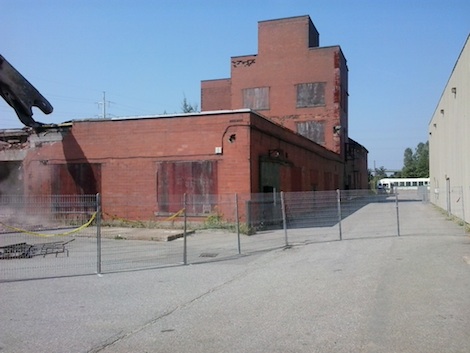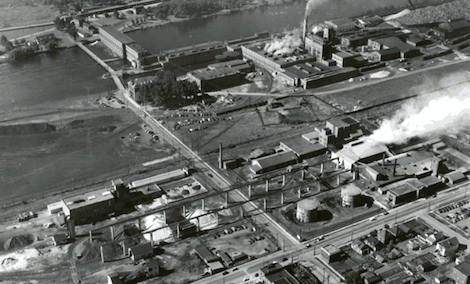I wonder whether those who attended the meeting were aware that the Soo previously had a Chromium Mining and Smelting Corporation complex in the heart of the city....:
More of Sault's industrial past disappears (10 photos)
A loyal reader has today sent us photos showing demolition of the last highly visible remnant of the former Chromium Mining and Smelting Corporation complex in the city.
2
Aug 20, 2013 4:15 PM by: SooToday Staff
View Photo Gallery

A loyal reader has today sent us photos showing demolition of the last highly visible remnant of the former Chromium Mining and Smelting Corporation complex in the city.
Located between the Sault Transit building on Huron Street and the railway tracks, this structure was once part of a much larger facility.
Almost exactly 78 years ago, local officials took part in ceremonies marking the launch of the first chromium smelting activity in the British Empire.
Mayor R.M. McMeeken played a prominent role in the August 23, 1935, event.
The "chrome plant" - as the enterprise was commonly known - developed into a significant employer during the city's industrial heyday.
The photo below, courtesy of the Sault Ste. Marie Public Library archives, shows the plant (emitting white smoke) as a going concern.
Additional archival aerials from the library can be seen in the gallery for this article.

By January 1959, chrome plant operations were winding down and forcing over 100 workers to look for alternatives.
Decades later, around 300 more industrial jobs would be lost nearby with the closing of St. Marys Paper and the 2012 sale of the property .
***************************************************************************
They also used to have nearly 12,000 employees at the Algoma Steel Mill Complex in the 1980s. Presently their workforce is down to ~2700 I believe. The city has become a virtual "retirement community" with the majority of secondary school graduates having left to southern Ontario for University starting in the (mid-1980's) and never returning... population is ~10,000 lower now than 30 years ago...they don't need no stinkin Ferrochrome smelter!
Cheers,
Luker

